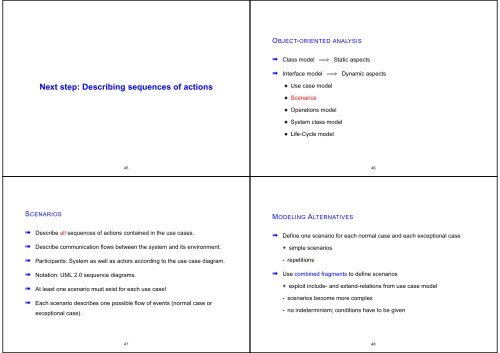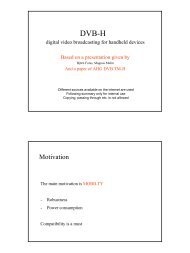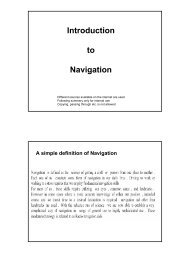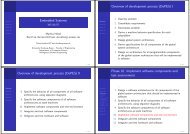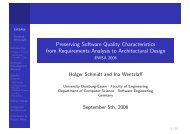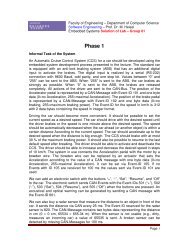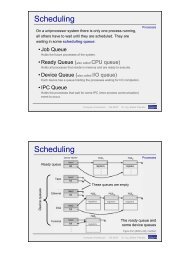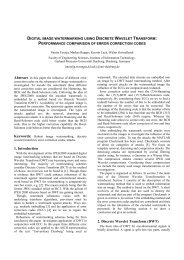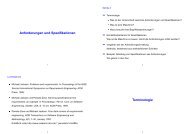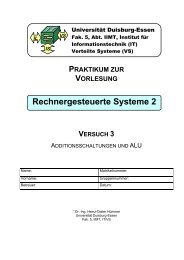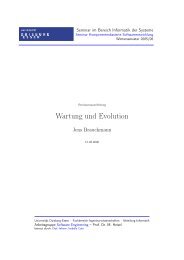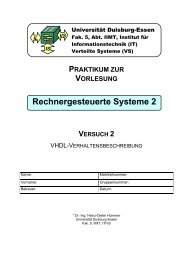Slides Part 2 (OOA, pages 1-128, pdf, 4 slides per page)
Slides Part 2 (OOA, pages 1-128, pdf, 4 slides per page)
Slides Part 2 (OOA, pages 1-128, pdf, 4 slides per page)
Create successful ePaper yourself
Turn your PDF publications into a flip-book with our unique Google optimized e-Paper software.
Next step: Describing sequences of actions<br />
SCENARIOS<br />
➠ Describe all sequences of actions contained in the use cases.<br />
➠ Describe communication flows between the system and its environment.<br />
45<br />
➠ <strong>Part</strong>icipants: System as well as actors according to the use case diagram.<br />
➠ Notation: UML 2.0 sequence diagrams.<br />
➠ At least one scenario must exist for each use case!<br />
➠ Each scenario describes one possible flow of events (normal case or<br />
exceptional case).<br />
47<br />
OBJECT-ORIENTED ANALYSIS<br />
➠ Class model =⇒ Static aspects<br />
➠ Interface model =⇒ Dynamic aspects<br />
• Use case model<br />
• Scenarios<br />
• O<strong>per</strong>ations model<br />
• System class model<br />
• Life-Cycle model<br />
MODELING ALTERNATIVES<br />
➠ Define one scenario for each normal case and each exceptional case<br />
+ simple scenarios<br />
- repetitions<br />
➠ Use combined fragments to define scenarios<br />
+ exploit include- and extend-relations from use case model<br />
- scenarios become more complex<br />
- no indeterminism; conditions have to be given<br />
46<br />
48


